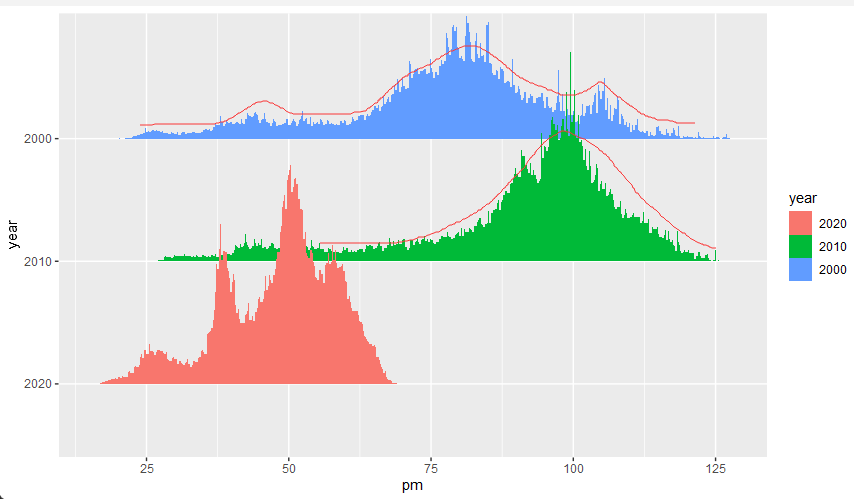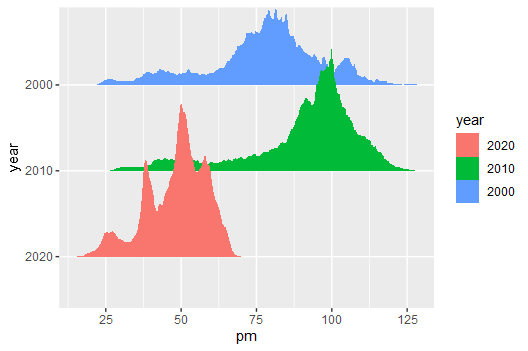Data can be downloaded from here
- PM is the concentration of PM2.5,
- pop is the number of exposed individuals at the corresponding concentration
- year
Then draw the number of people corresponding to different pm values for different years.
library(tidyverse)
library(ggridges)
pm_ua <- readxl::read_excel("pm_ua_pop.xlsx")
pm_ua %>%
mutate(year = factor(year, levels = c("2020", "2010", "2000"))) %>%
ggplot() +
geom_density_ridges(
aes(x = pm, y = year, height = pop, fill = year),
size = 0,
stat = 'identity'
)
But I hope the graphics are smoother. I thought for a long time and used a foolish method, but it seems too unscientific and occupying too much memory.
d <- pm_ua %>%
uncount(pop)
d %>%
mutate(year = factor(year, levels = c("2020", "2010", "2000"))) %>%
ggplot() +
geom_density_ridges(
aes(x = pm, y = year, fill = year),
stat = "density_ridges"
)
Is there a better way to ask for advice? thanks

